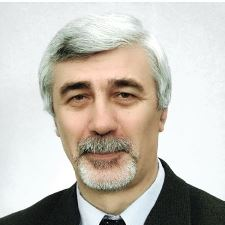Metal-Organic Coordination Compounds: Synthesis, Structure, Spectra, Applications
A special issue of International Journal of Molecular Sciences (ISSN 1422-0067). This special issue belongs to the section "Physical Chemistry and Chemical Physics".
Deadline for manuscript submissions: 30 May 2024 | Viewed by 4818
Special Issue Editors
Interests: molecular structure; intramolecular dynamics; thermodynamics, IR spectra; gas-phase electron diffraction; mass spectrometry; DFT and ab initio calculations
Special Issues, Collections and Topics in MDPI journals
Interests: molecular structure; intramolecular dynamics, coordination compounds, gas-phase electron diffraction; IR spectroscopy, mass spectrometry, quantum chemical calculations
Special Issue Information
Dear Colleagues,
Coordination compounds of metals with organic ligands cover the widest class of chemical compounds and find various applications in the chemical industry, catalysis, microelectronics, sensors, medicine, pharmacology, etc. A powerful addition to the wide range of physical methods used to study this class of compounds are quantum chemical calculations, which constitute a dynamically progressing alternative to experiment.
Specialists in synthesis, molecular structure, vibrational and electronic spectroscopy, magnetic and catalytic chemistry, chemosensorics, and quantum chemical calculations are invited to submit their contributions to this Special Issue in accordance with its subject matter. Works that combine complementary experimental and theoretical studies are especially welcome.
Prof. Dr. Georgiy V. Girichev
Prof. Dr. Nina Giricheva
Guest Editors
Manuscript Submission Information
Manuscripts should be submitted online at www.mdpi.com by registering and logging in to this website. Once you are registered, click here to go to the submission form. Manuscripts can be submitted until the deadline. All submissions that pass pre-check are peer-reviewed. Accepted papers will be published continuously in the journal (as soon as accepted) and will be listed together on the special issue website. Research articles, review articles as well as short communications are invited. For planned papers, a title and short abstract (about 100 words) can be sent to the Editorial Office for announcement on this website.
Submitted manuscripts should not have been published previously, nor be under consideration for publication elsewhere (except conference proceedings papers). All manuscripts are thoroughly refereed through a single-blind peer-review process. A guide for authors and other relevant information for submission of manuscripts is available on the Instructions for Authors page. International Journal of Molecular Sciences is an international peer-reviewed open access semimonthly journal published by MDPI.
Please visit the Instructions for Authors page before submitting a manuscript. There is an Article Processing Charge (APC) for publication in this open access journal. For details about the APC please see here. Submitted papers should be well formatted and use good English. Authors may use MDPI's English editing service prior to publication or during author revisions.







